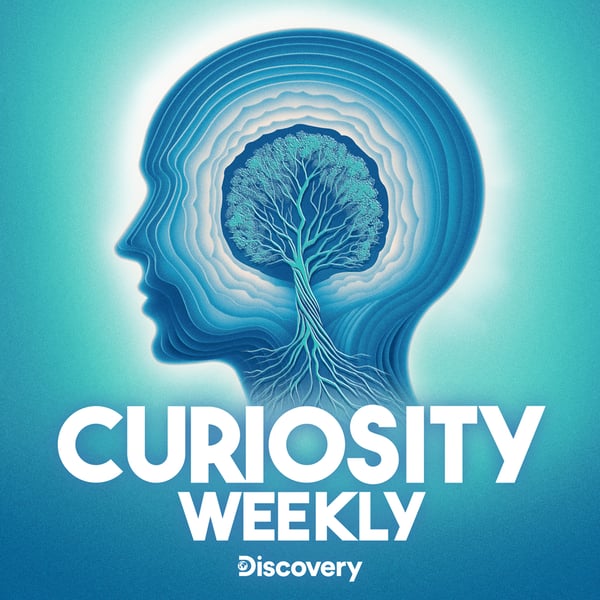Communicate Using Simple Noises, Find Your House on Pangaea, and Kepler’s Legacy
Curiosity Weekly
Warner Bros. Discovery
4.6 • 935 Ratings
🗓️ 27 February 2019
⏱️ 9 minutes
🧾️ Download transcript
Summary
Learn about how much you can say with simple noises called vocal bursts; why you might keep hearing about the Kepler Space Telescope even though it’s retired; and how you can find out where your house would’ve been on Pangaea.
Please support our sponsors! Small business owners: visit https://www.ondeck.com/curiosity to receive a free consultation with a US-based loan specialist. Apply online or by phone and get approved in minutes.
In this podcast, Cody Gough and Ashley Hamer discuss the following stories from Curiosity.com to help you get smarter and learn something new in just a few minutes:
- Scientists Have Created an Audio Map of Emotions Using Only Noises — https://curiosity.im/2GXuYWv
- This Is the Kepler Space Telescope's Final Image — https://curiosity.im/2tuLndn
- Find Out Where Your House Would Have Been on Pangaea — https://curiosity.im/2tuw9oH
If you love our show and you're interested in hearing full-length interviews, then please consider supporting us on Patreon. You'll get exclusive episodes and access to our archives as soon as you become a Patron! https://www.patreon.com/curiositydotcom
Download the FREE 5-star Curiosity app for Android and iOS at https://curiosity.im/podcast-app. And Amazon smart speaker users: you can listen to our podcast as part of your Amazon Alexa Flash Briefing — just click “enable” here: https://curiosity.im/podcast-flash-briefing.
Find episode transcript here: https://curiosity-daily-4e53644e.simplecast.com/episodes/communicate-using-simple-noises-find-your-house-on-pangaea-and-keplers-legacy
Hosted on Acast. See acast.com/privacy for more information.
Transcript
Click on a timestamp to play from that location
| 0:00.0 | Hi, we're here from Curiosity.com to help you get smarter in just a few minutes. |
| 0:05.0 | I'm Cody Gough. |
| 0:06.0 | And I'm Ashley Hamer. |
| 0:07.0 | Today you'll learn about how much you can say with simple noises, |
| 0:10.0 | why you might keep hearing about the Kepler Space Telescope even though it's retired, |
| 0:14.0 | and how you can find out where your house would have been on Pangea. |
| 0:17.5 | But set us some curiosity. |
| 0:19.0 | There's new research into how much we can communicate using a thing called vocal bursts. You absolutely use these. |
| 0:27.3 | They include laughs and roars, ooze and aze, sighs and shrieks. It's those little non-language-based noises we make, and this study is super fun. |
| 0:38.0 | Ooh. Mm-mm. Yeah, that's a vocal burst, one of those, hmm, or, ah, sounds. |
| 0:45.0 | Also, the website they made is super alarming if you go to it for the first time. |
| 0:50.4 | I would absolutely recommend headphones or pressing mute before you click on the |
| 0:55.1 | link that we've gotten the show notes. Yeah there's going to be some sound |
| 0:57.5 | effects involved in this story so let's dig in now this research was published in a |
| 1:02.4 | recent paper in American psychologist and it comes |
| 1:05.6 | from an emerging field in psychology called Emotion Science. It has its own journal |
| 1:10.8 | and everything. Anyway the point of this study was to see how many feelings |
| 1:14.4 | you can communicate with these little vocal bursts. |
| 1:17.7 | According to past studies, |
| 1:19.2 | people could recognize 13 emotions in vocal bursts. |
| 1:22.8 | But those studies took answers from multiple choice questionnaires, |
| 1:26.5 | so the options were kind of limited in what they could find. |
... |
Please login to see the full transcript.
Disclaimer: The podcast and artwork embedded on this page are from Warner Bros. Discovery, and are the property of its owner and not affiliated with or endorsed by Tapesearch.
Generated transcripts are the property of Warner Bros. Discovery and are distributed freely under the Fair Use doctrine. Transcripts generated by Tapesearch are not guaranteed to be accurate.
Copyright © Tapesearch 2025.

